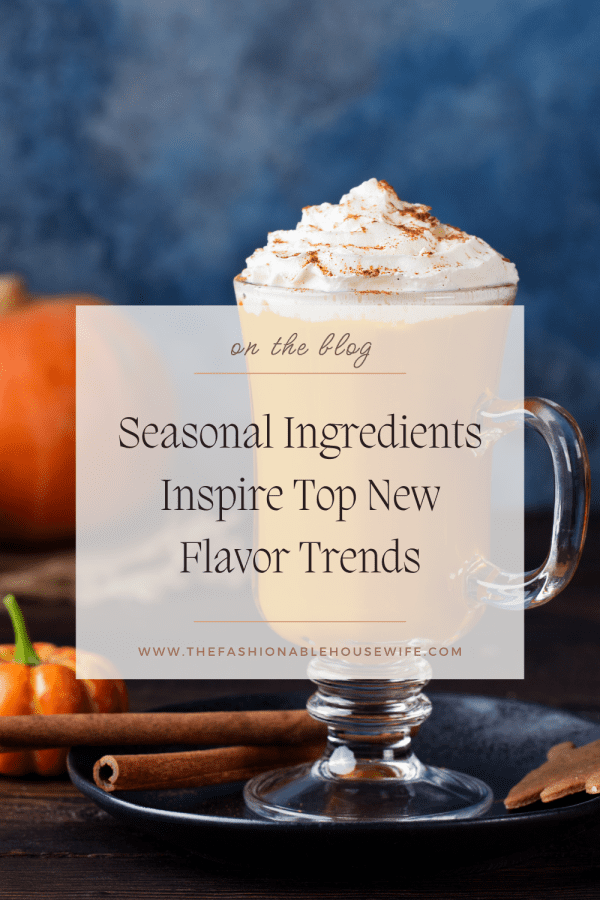Seasonal Ingredients Inspire Top New Flavor Trends

Table of Contents
- Nostalgic Flavors with a Modern Twist
- Global Influences on Seasonal Flavors
- The Rise of Sweet and Spicy Combinations
- AI-Driven Flavor Innovation
- Functional and Wellness-Driven Flavors
- Sensory Experiences and Texture Play
- Limited-Time Offerings and Marketing Strategies
- Conclusion
Each year, food and beverage lovers anticipate unveiling seasonal flavors that capture the magic of new beginnings—be it autumn’s cozy spices or spring’s fruity freshness. Brands harness these fleeting tastes to evoke nostalgia, spark curiosity, and drive engagement. Recent launches, like 5- hour Energy Cranberry Lime, highlight how these flavor waves become must-try sensations, drawing crowds searching for unique taste experiences.
The phenomenon of limited-time seasonal flavors doesn’t just feed cravings—it also sets the stage for culinary innovation. As consumer tastes become more adventurous, seasonal trends pave the way for surprising combinations and inventive product launches. Whether it’s a twist on childhood classics or a fusion inspired by global cuisines, these innovations keep the industry vibrant and dynamic.
Nostalgic Flavors with a Modern Twist
Classic flavors from childhood hold a deep emotional pull, sparking memories of comfort and celebration. Today’s artisans and major brands are reintroducing these favorites with unexpected twists that make them feel fresh again. Consider the revival of s’mores: once only a campfire treat, it now stars in ice cream sandwiches, lattes, and even savory sauces. Creamsicle and root beer, too, are showing up in creative formats, such as craft cocktails and dessert-inspired yogurts. These nostalgic yet fresh profiles balance the past and the present, giving consumers the best of both worlds.
Global Influences on Seasonal Flavors
Globally inspired flavors are reshaping the seasonal landscape in bold new ways. Ingredients like Japanese yuzu, Korean gochujang, and Middle Eastern za’atar are migrating into traditional holiday staples, exciting both adventurous foodies and curious newcomers. This cross-cultural embrace doesn’t just diversify flavor palettes—it also fosters greater global appreciation and opens doors for culinary storytelling. Food trend analysts at Food & Wine frequently highlight how these fusions fuel a new era of seasonal innovation.
The Rise of Sweet and Spicy Combinations
A new sensation dubbed “swicy”—the marriage of sweet and spicy—has staked its claim on the seasonal table. From mango-habanero sauces to chili-flecked chocolate bark, this trend offers complexity that appeals to the modern palate. These bold pairings not only awaken the senses but also deliver an unexpected element of surprise. Spiced honey, candied jalapeños, and fruit-infused hot sauces are shining examples of how this contrasting flavor profile has become a mainstay in both independent eateries and nationwide chains.
AI-Driven Flavor Innovation
Artificial intelligence is rapidly transforming how new flavors are created, especially for limited-time seasonal products. By analyzing vast datasets of consumer reviews, preferences, and trending ingredients, AI tools can predict which combinations are most likely to resonate. Food companies leverage these insights to launch never-before-seen seasonal snacks and drinks—sometimes matching daring flavors that surprise even the most seasoned chefs. Big data isn’t just driving efficiency; it’s unlocking creativity and helping brands stay ahead in an ever-shifting market.

Functional and Wellness-Driven Flavors
Today’s consumers are more health-conscious than ever, seeking not just taste but also nutritional and functional benefits in every bite. This desire drives a surge in wellness-focused seasonal products, featuring ingredients such as adaptogens, nootropics, probiotics, and plant-based superfoods. Holiday teas infused with ashwagandha, immunity-boosting lattes, and probiotic-rich yogurts timed for the cold winter months reflect a holistic approach to flavor development. According to EatRight.org, this demand for healthier choices is reshaping menus and grocery aisles across the globe.
Sensory Experiences and Texture Play
It’s not just about taste—seasonal food and drink are designed to be multisensory experiences. Brands enhance their offerings with vibrant colors, inventive textures, and interactive elements, often aiming for social media-worthy presentation. Think color-changing teas for spring, multi-layered desserts for the holidays, or beverages that fizz, pop, or crackle with every sip. Texture—whether it’s the addition of popping boba, crispy toppings, or creamy swirls—invites deeper engagement and builds memorable experiences for consumers.
Limited-Time Offerings and Marketing Strategies
The “limited time only” strategy is a powerful marketing tool that turns scarcity into buzz. Seasonal flavors almost always come with an expiration date, prompting customers to act quickly so they don’t miss out. Brands regularly pair these launches with influencer partnerships, themed packaging, and interactive campaigns to amplify excitement. Collaborations—such as those between coffee shops, local bakeries, beverage companies, and pop-culture brands—add extra layers of appeal and visibility. Limited-time launches spike sales and serve as a low-risk way to test new concepts before making them permanent fixtures.
Conclusion
Seasonal flavors are far more than marketing gimmicks; they are a creative force pushing the industry forward. By blending nostalgia with modern invention, weaving in global influences, and adapting to wellness trends, brands ensure that every season offers something new to savor. For consumers and businesses alike, the future of seasonal flavors looks bold, innovative, and irresistibly delicious.

